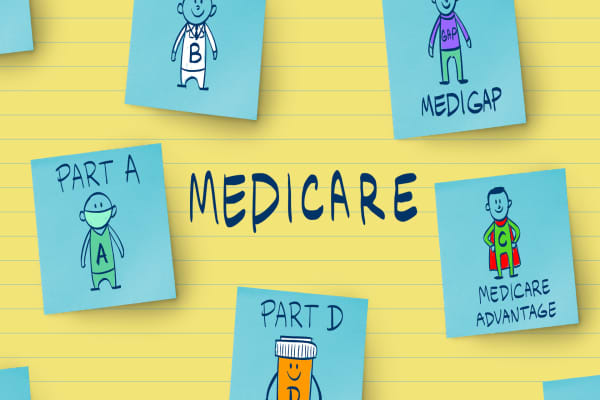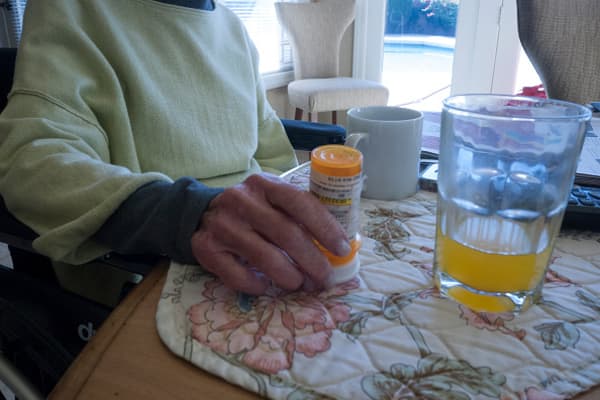- The Trump administration wants to let Medicare Part D prescription drug plans more easily negotiate prices with manufacturers.
- Officials also want to require plans to pass on a portion of any drugmaker rebates they get to their enrollees.
- Among the 10 most-utilized standalone plans, the average premium ranges from $20.21 to $83.68 per month, according to the Kaiser Family Foundation.
With President Trump on Friday outlining his plan to lower prescription drug prices for Medicare recipients, you might wonder if it means other costs related to your coverage will come down.
Don’t count on it.
As it stands, exactly what Medicare beneficiaries pay for prescription drug coverage depends on the specifics of the plan they choose and their income. And while some drugs could cost less under Trump’s plan — which is expected to echo proposals already floated in the administration’s proposed fiscal year 2019 budget — there’s a chance insurers could react to any reduced revenue by eyeing their customers’ wallets.
“They might shift costs to plan enrollees through higher premiums and deductibles, or shifting drugs to higher [cost] tiers,” said Mary Johnson, Social Security and Medicare policy analyst for The Senior Citizens League.
As part of the president’s larger goal of bringing down the cost of prescription drugs for all consumers, one of his proposals is to give Medicare Part D plans more negotiating power with drugmakers. Medicare itself cannot negotiate drug prices, and Trump’s plan wouldn’t change that.
Trump also is expected to propose requiring plans to pass on part of the savings they yield through drug manufacturer rebates. The administration’s proposed 2019 budget also included this point, pushing for plans to share at least one-third of those discounts.
“That’s good, but it also would codify in law that [insurers] are allowed to pocket two-thirds of the rebates as profits,” Johnson said.
Here’s what people already pay for Part D coverage.
The basics
Getting prescription drug coverage through Medicare is optional. You choose to get it as a standalone Part D plan that serves as a supplement to original Medicare (Parts A and B) or as part of a Medicare Advantage Plan (Part C).
However, if you fail to sign up when you first qualify for coverage and change your mind later, you’ll face a life-lasting penalty unless you meet certain exclusions (i.e., you receive acceptable coverage through a union or employer).
If you have Original Medicare and are looking for a standalone drug plan, the average monthly premium paid for 2018 is an estimated $43.48, according to the Kaiser Family Foundation.
This is a 9 percent increase from the $39.90 in 2017, and a 68 percent increase from $25.89 in 2006. Exactly how much you pay depends partly on the plan you choose and your income. Higher earners pay a surcharge in addition to their plan’s premium (see chart).
Among the 10 standalone plans with the highest enrollment, the average premium this year ranges from a low of $20.21 per month ($243 yearly) to a high of $83.68 monthly ($1,004 annually), according to the Kaiser Family Foundation.
If you go with a Medicare Advantage Plan, most also include prescription drug coverage.
This makes it all the more important to make sure that the Advantage Plan that you like for other reasons — i.e., maybe it includes vision or dental — also will make sense for your medications.
For instance, if you pick an Advantage Plan and the pharmacy you have to go to is far away, you’re stuck with that until this fall’s open enrollment period. Same goes for a standalone plan.
Disappearing ‘donut hole’
It’s also important to keep in mind that for 2018, most drug plans — whether as a standalone or as part of an Advantage Plan — have a gap in coverage called the “donut hole.” This gap will disappear in 2019, due to a provision included in the federal budget put in place earlier this year.
Basically, the donut hole this year starts when you have spent $3,750.
If you hit that threshold, you enter the “doughnut hole” and will pay a higher share of drug costs until you reach the so-called catastrophic coverage phase. In 2018, this starts once your annual out-of-pocket drug costs hit $5,000.
Not everyone will ever reach the “donut hole,” and people who get government help paying drug plan costs will not face it. To find out if you qualify for the Extra Help program that helps limited-income households pay for Medicare prescription drug coverage, contact your state’s Medicaid agency or the Social Security Administration.
Source: https://www.cnbc.com/amp/2018/05/11/trump-is-targeting-medicare-drug-prices-heres-what-part-d-coverage-costs.html









